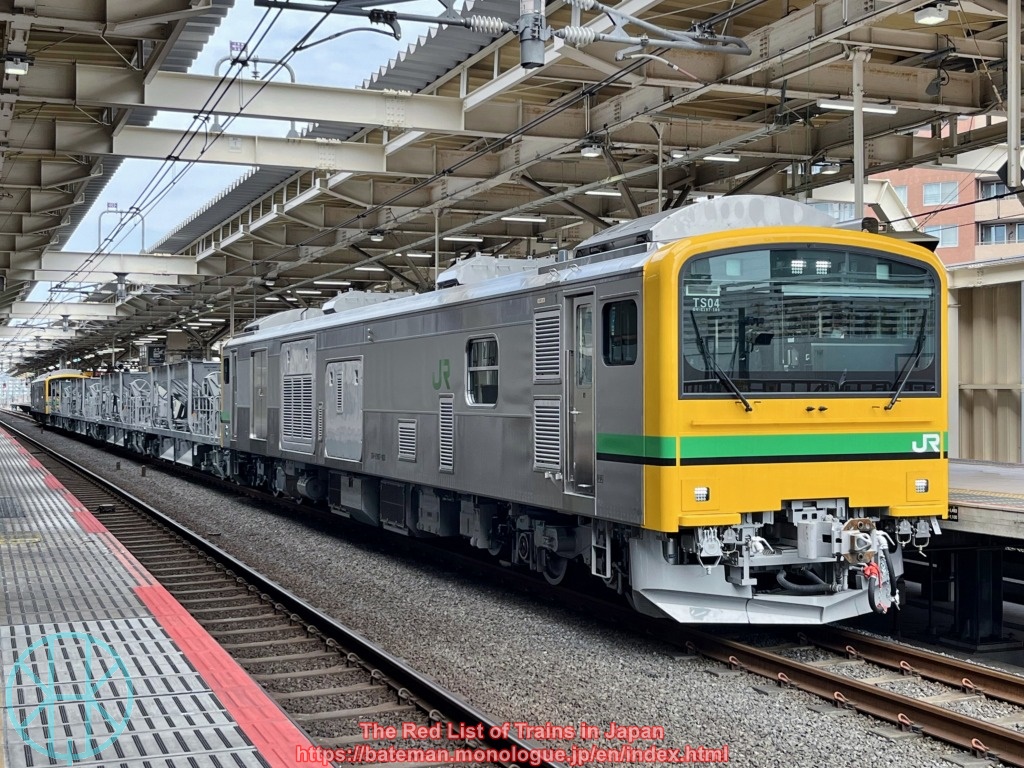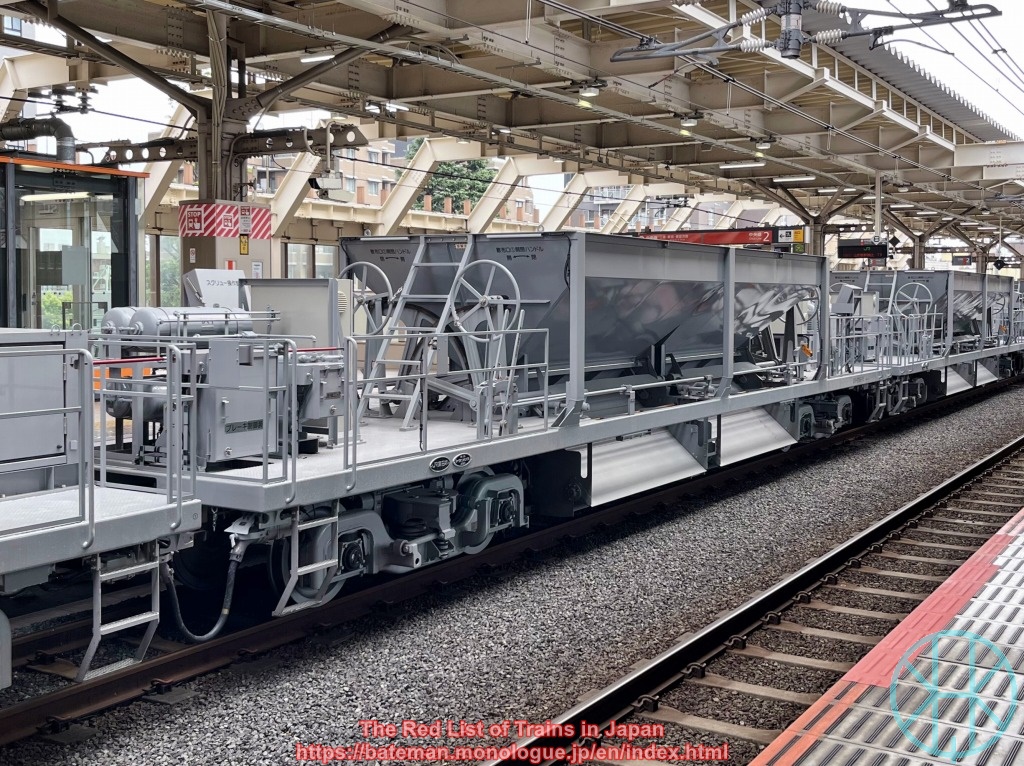JR East GV-E197 series

Data (as of 29 Nov 2025)
| Status: | Least Concern |
| Constructed in: | 2021-24 |
| Number built: | 44 |
| Registered: | 44 |
History
The GV-E197 series is a diesel-electric multiple unit for non-passenger purposes. The GV-E197 series is a ballast train usually formed of six carriages in total: two front carriages with engines and four wagons carrying ballast. The front carriage can also be used as a shunter or haul other trains while engaging in empty coaching stock movements. The front carriage of the GV-E197 series looks almost identical to JR East E493 series, a type of quasi electric locomotive. However, the E493 series is an electric train so that it has two pantographs, while the GV-E197 series does not.
The GV-E197 series was introduced to replace locomotives for ad hoc engineering work including Class DE10. According to JR East, the new diesel trains are far more environmentally friendly, easier to deal with and cheaper than the old locomotives developed by Japanese National Railways in the 1960s.
The wagons are called GV-E196, purely used for ballasting. Its structure is mostly unchanged from JNR HoKi 800 series wagons developed in the late-1950s, but computers and conveyors have made it far easier for workers to deal with track maintenance work.
Seven six-car units and two front carriages have been allocated to Gunma depot in Takasaki.
Current Operations & Future Prospects
The GV-E197 series trains have been used for ballasting across the JR East network. In addition, they are also used to haul other trains being transported from a depot to another depot. They are always marked as "runs as required".
JR East is going to use the series as a bank engine for steam trains in Takasaki area from 2024 as JNR's electric and diesel locomotives retire.
Photo

GV-E196 wagon.
(Updated: 29 Nov 2025)
